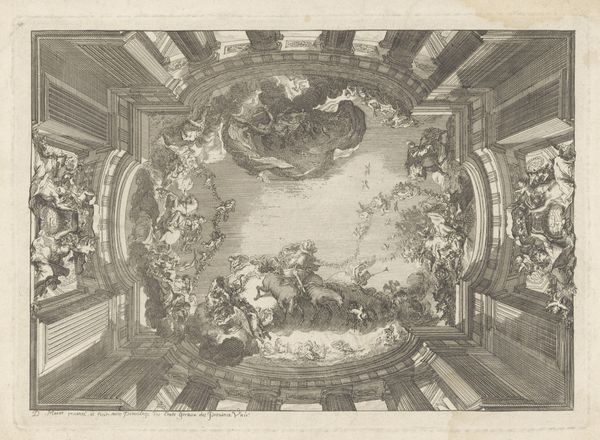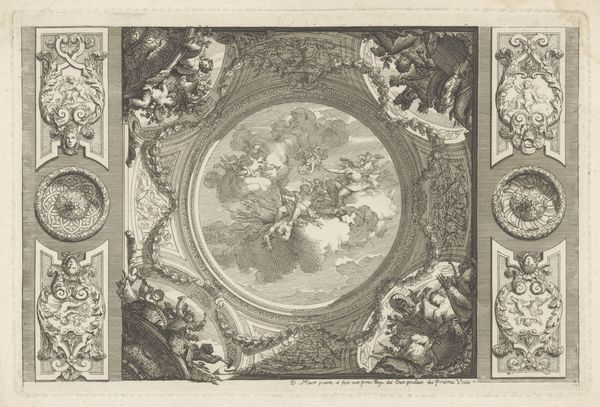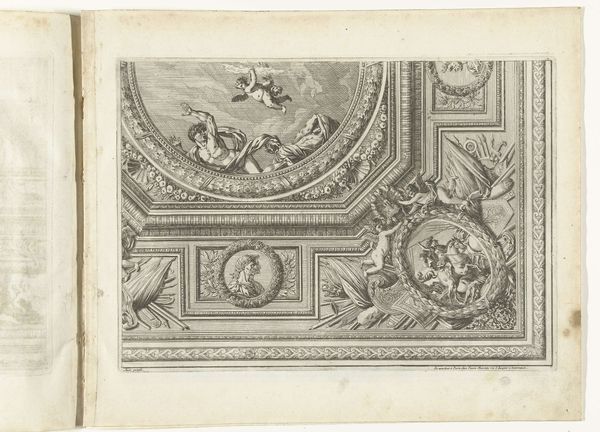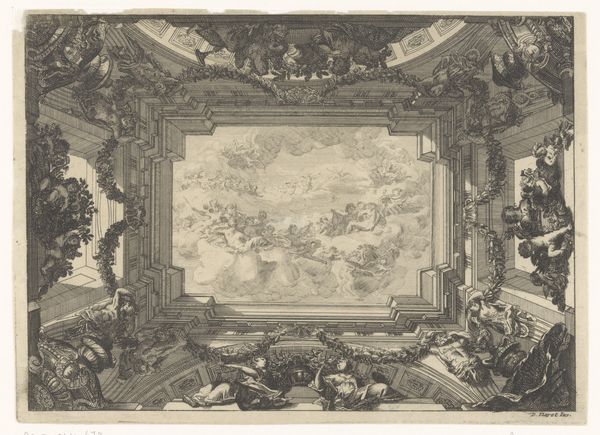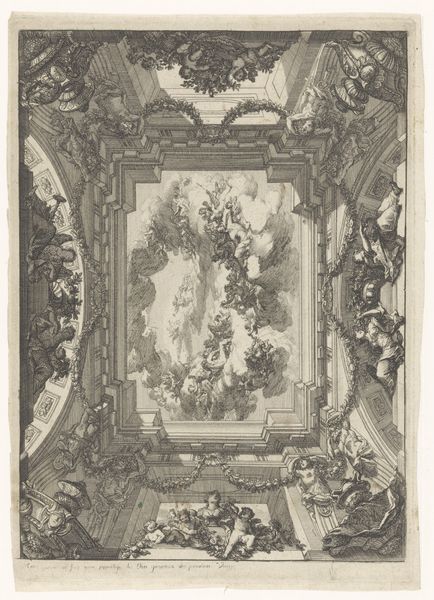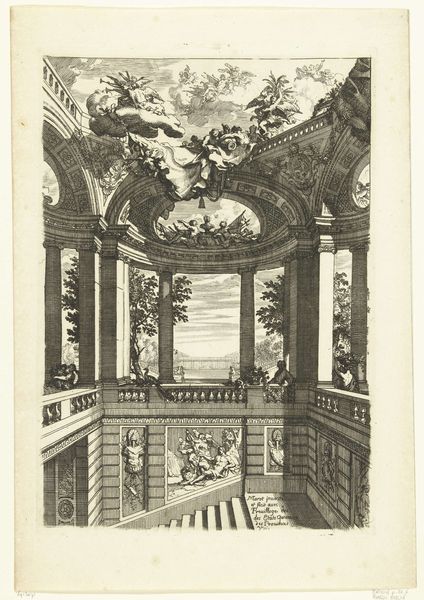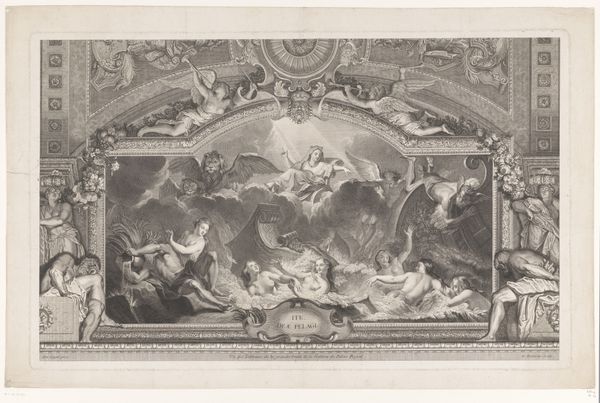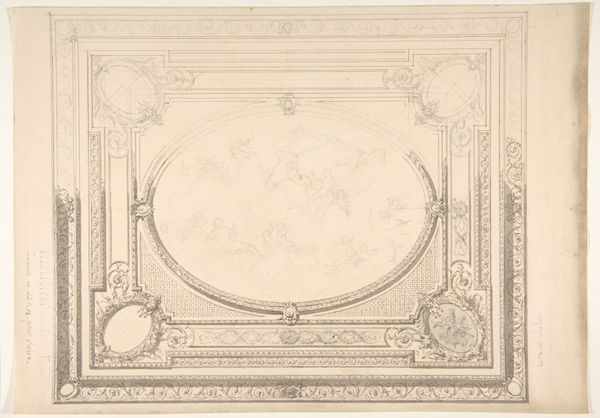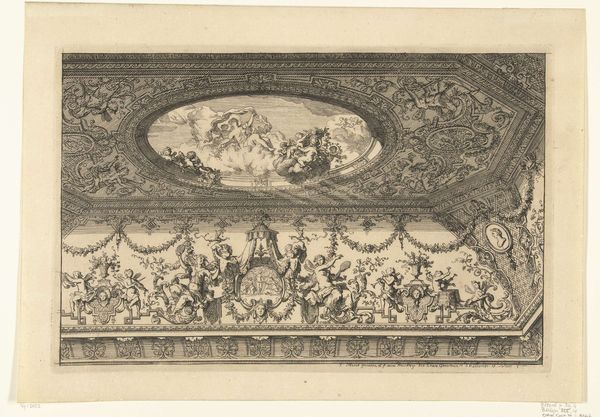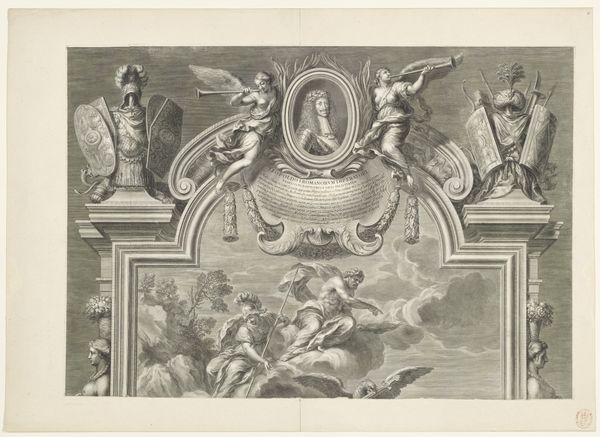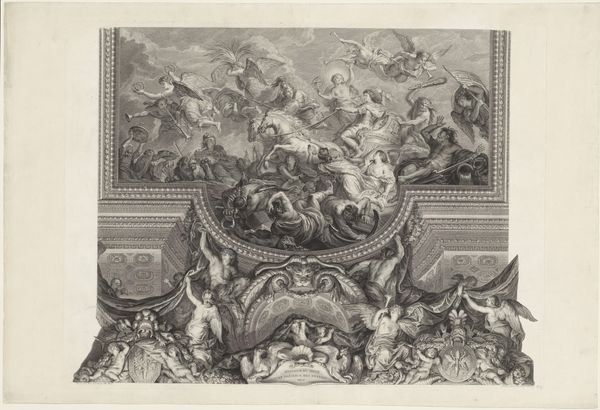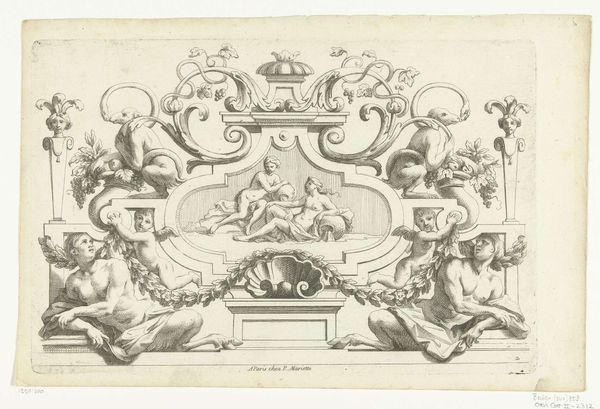
engraving, architecture
#
allegory
#
baroque
#
history-painting
#
engraving
#
architecture
Dimensions: height 190 mm, width 266 mm
Copyright: Rijks Museum: Open Domain
Curator: This is "Trompe-l'oeil plafond met mythologische voorstelling," or "Trompe-l'oeil Ceiling with Mythological Scene," an engraving made around 1712 by Daniël Marot. It’s part of the Rijksmuseum's collection, offering a captivating illusion of soaring height. Editor: My immediate thought is: drama! There's such dynamism, with those figures tumbling through the clouds. Even though it’s a print, the artist has captured a theatrical grandeur. It makes me wonder, though, about the relationship between power and spectacle in this era. Curator: Exactly! It evokes a baroque ideal, aiming to inspire awe and project authority through classical imagery. Notice the trompe-l'oeil, that “fool the eye” effect: the columns, the figures in the corners, they all contribute to an illusion that you're looking up into a real dome. This speaks volumes about the status these rooms would signify. Editor: It's interesting how architecture itself becomes a stage for expressing dominance. Are the figures identifiable, or are they intended as a more generic celebration of power? I'm struck by the ways that classical symbols, reused across different contexts, could become both loaded and emptied of meaning over time. Curator: The allegory here definitely plays a significant part; each character serves a function within the larger narrative of the engraving. There are several that seem rooted in triumphal processions of conquest from antiquity—this work likely had a propagandistic purpose, associating its patron with such figures of legendary reputation. These images echo throughout history, gaining new layers each time. Editor: It does prompt the question: Whose history is being painted, printed, and endlessly circulated? In a modern context, should museums exhibit such works without addressing the problematic histories these illusions were designed to obfuscate? Curator: Absolutely, providing that crucial context is vital. By presenting this work, alongside commentary about power dynamics of the era, we can challenge it to tell a much fuller and more complete version of its historical trajectory. Editor: Indeed. It really encourages reflection about how the aesthetics of power continue to be deployed, albeit often in new forms and for contemporary contexts. Curator: Seeing history etched in illusion, in many ways the image resonates profoundly with my view. Editor: It seems to reinforce my idea of the way aesthetics operate as more than pretty or alluring in a space; its history shows what political project lies at its foundation.
Comments
No comments
Be the first to comment and join the conversation on the ultimate creative platform.
